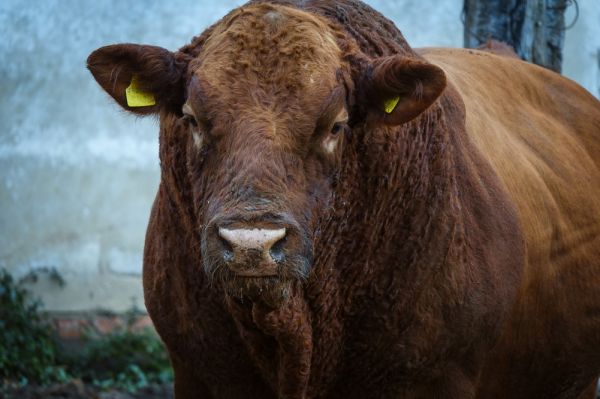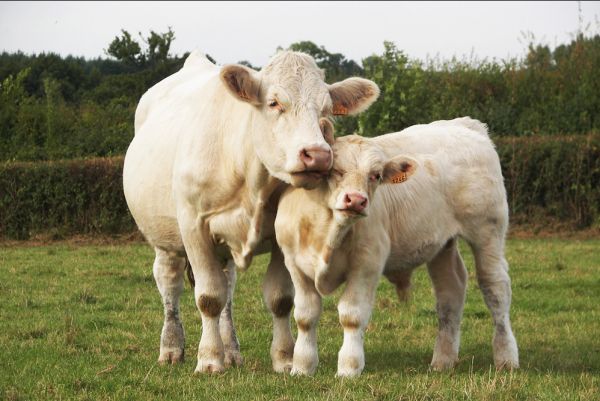Agricore Holding: Meat Livestock Production Ambitions
The current market situation leaves no other options for agroholdings other than to change and develop. Having spoken to the chief livestock production technologist at Agricore Holding Aleksandr Budnyk, Latifundist.com found out in what direction is this structural division of Agrain Agro Group is planning to move. He came out with the company's plans to increase livestock up to 11-17 thousand head annually, new sales markets in the future, approach to personnel management and technology of breeding young beef cattle for slaughter.
On year results
Agricore Holding completed the year 2018 rather well. The business plan fulfilled. Sales indicators hit 9-10 per cent of profitability, while the planned level was about 15-17 per cent. If compared with the previous year, we "underplayed" a bit. In fact, there was no planned sale — the optimal price and the client. We sold the products in January, but the year had already been closed. If one takes the actual money that we made on livestock sold in January and accounts them in 2018, then yes, we are profitable. It turns out that we just closed the year a little worse, however without losses. We sold about 900 tons last year, that is about 1.800 head with an average weight of 500 kg.
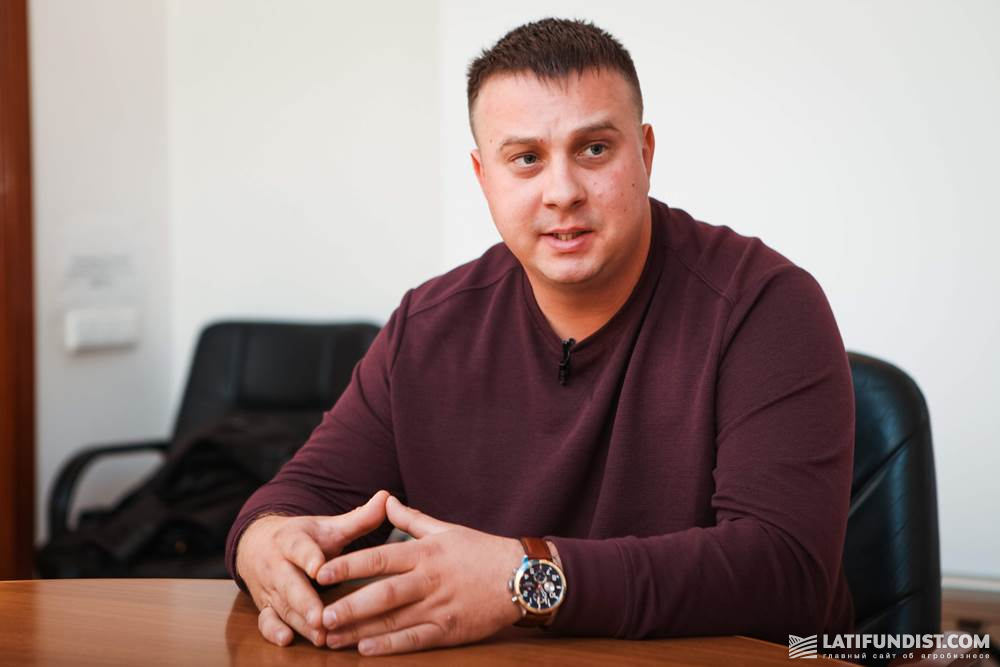
For 2018, the planned average weight gain was 1.15 kg/day. We fell short of 48 g. The plans, of course, provide for an increase in this indicator. But this is an average annual gain. Seasonality influences the process much, as we have the technology of free housing of cattle in the open air. Today, this indicator does not exceed 1.1-1.2 kg/day. In summer, it may reach 1.4-1.6 kg of weight gain.
We improved the grazing duration indicator by prolonging it until December 23rd. This makes up 220 days, whereas standard grazing indicator is 160-180 days. Accordingly, this affects the cost of the products. We could have left the livestock longer, but there was too much snow. Of course, our cows can stand in the snow, but we have not fully thought this technology through. Cows are with calves, so they need to be placed in a suitable room to have a good calf. Then the grazing season starts again. This year in late April, animals were already grazing.
Last year, 100 cows gave birth to 92 calves. But for myself, I elaborated a completely different indicator — the production of calves for fattening. Surely, 100 cows can produce 100 calves. But how many of them will reach the final phase of fattening, and will they eventually be sold? There were 91 such calves in 2018.
At the beginning of spring this year, there were 1837 cows in Agricore Holding. Last year, the company received a total of about UAH 3 million of state subsidies for livestock breeding (cows). This amount covers 3-6 per cent of all costs for yearly breeding of cows only. In 2019, this amount of state support should grow. Instead of UAH 750 per head for six months, we will receive UAH 900.
Objectives of the year
Last year, as a result of certain financial issues, the process of purchasing Holstein bull-calves for fattening was suspended. Now we are raising this question again, as the management plans envisage exporting about 5-6 thousand bulls per year. We do not have current resources for such an increase. The best option is to buy a 2-3-week-old bull, feed it on milk, rear it, and then sell it until we increase our own capacity. Such a plan is set for 4-5 years.
If a rapid development option comes up, for example, buying a productive stud heifer, we can reach those indicators. To date, there are such farms, but none wants to sell them but to develop this business segment. Over the past three years, the level of beef cattle in Ukraine hardly has grown, yet people are interested in it. Even dairy livestock breeders who used to simply sell young bulls for breeding or slaughtering now began leaving this livestock for themselves. Almost 50-60 per cent of farms engaged in breeding and sale of bull-calves.
In the future, we plan to slightly alter the technology of grazing. Every year we use a portable electric shepherd, serviced by 2-3 people. This year for one herd, we do want to try what the Europeans, Australians, and Americans practise. We will fence off a rented area and livestock will graze without the involvement of people. These will be 1.8-2.3 hectares land plots separated by electric fences.
A specialist will come every day to monitor the situation in the field. I worked in Australia. None goes to the field there, none watches livestock.

Optimization is not necessarily a reduction
This year, optimization of personnel and production is planned in Agricore Holding. I for one think that it is necessary to optimize livestock rather than staff. That is, when I have eight people taking care of two thousand head, these same eight people can feed up to four thousand head.
If there is a staff increase, it will be minimal. Since we strive to do everything more optimally: introduce innovations, digitalize processes. We all understand perfectly well that if we want to make a profit, we have to pay a good salary, but not UAH one thousand each. We have to pay UAH 10-12 thousand to two-three employees, and this is how it should work.
Yes, we realize that Europe, Australia and America are completely different continents. But none of them has such an indicator as livestock duty per worker. And we still live by the old Soviet textbooks. The accounting department reports that we have a heavy workload — 100 head per worker. My question is what does he do? We take a picture of the working day and see that out 8 hours of the working day he sleeps 4 hours, works 2 hours, and another 2 hours plays at being busy.
I often recall the American business magnate Henry Ford who paid his repairmen responsible for the smooth operation of the conveyor for relaxing. They were paid only when they were sitting in the restroom. As soon as the red light of the assembly line breaks out, the counter stopped charging them money. Thus, they always made repairs promptly and efficiently. That is, they were stimulated by the fact that the longer they work, the less they earn. The more they rest, the more they earn. I really doubt that a person should sit from 8 a.m. to 5 p.m. and watch a “blockbuster” how a young bull eats or a tractor driver refuels the machine.
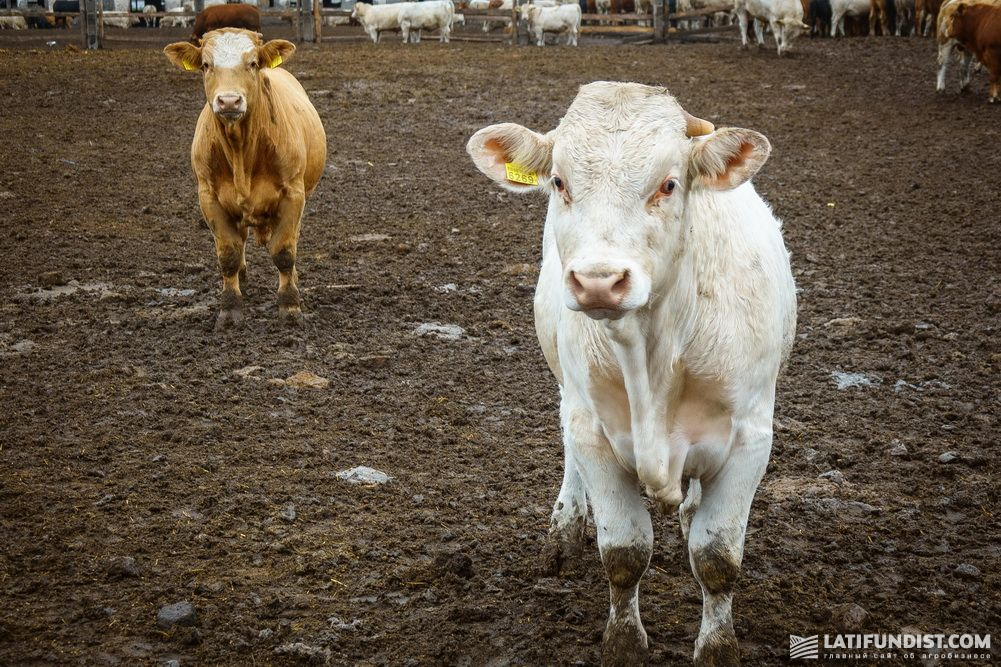
I do not force anyone to stay late or to work through the whole day. We have, to put it mildly, a flexible schedule. But there must be a result. I want people to do work pragmatically. A person must understand that he makes money, and he must be fully aware of what he does. And if he makes mistakes in his work, then it is also my mistake — perhaps I failed to teach him well.
Time to improve
The market situation in Ukraine forces us to improve feeding systems, to strive for saving already this year. We have one, let's say, new system. I have not heard it to be used in Ukraine.
It is about corn straw usage both as feed and litter. In Ukraine, this question is not very relevant, since the majority of agrarians use wheat straw for this purpose. We want to try corn straw. Our holding sows it quite a lot (in the Agrain agrogroup structure of the sown areas in 2019, 23.5 thousand hectares were allocated for corn for grain, 1.8 thousand hectares for silage corn — ed.).
We will try this technology in autumn. We are helped by the Schaumann Agri UA company, a developer of individual solutions for agricultural producers specializing in feeding farm animals.
As our agronomists say, we planted the crop, and then simply wasted this resource. And if we use corn straw, we will be able to free up some of the land used in animal husbandry. And this beneficial for the entire agrogroup.
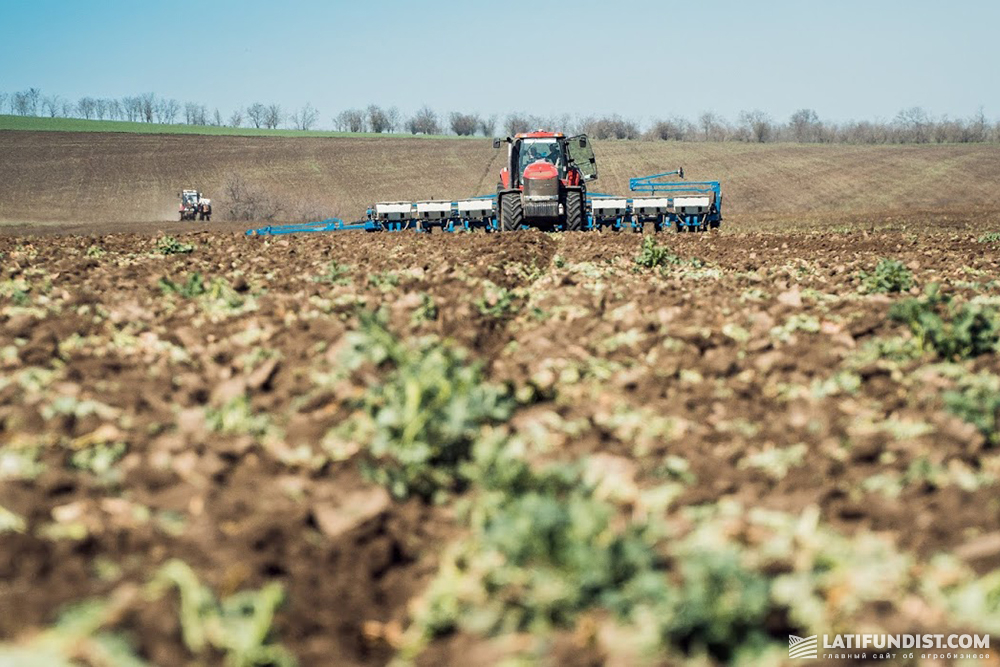
To date, Agricore Holding has about 6 thousand head of livestock, and we use about 1.2 thousand hectares of arable land. That is, the land that could bring profit in crop production is given to us for animal husbandry — for silage, wheat, and so on. Yes, we still earn money from it, we put profitability on top in order not to engage in self-delusion, to say the least. Over the past four years, we have come to the decision that it is impossible to reduce the price of animal feed. It is traded at market prices. We harvest silage, that is, certain profitability is planned for this green mass so that crop production could earn.
In some farms, corn silage costs UAH 400-500 UAH per ton. It is exceptionally cheap. We currently have a price of UAH 980 per ton. The average silage price in our holding is UAH 900-1.5 thousand per ton. In comparison with Kharkiv, Cherkasy, in Chernihiv region where we work it is a bit cheaper as there was a good yield (11 t/ha harvested on 10.5 thousand hectares on average in the Agrain agrogroup — ed.).
We try to count all agricultural crops used for animal husbandry at market prices. This is one of the factors why such profitability is achieved (9-10 per cent). Of course, if one used some waste from agricultural production in animal husbandry, the cost of feed would be lower. But, almost the entire grain group is sold. And the volume that we leave for animal husbandry, is fully used. We cannot call this crop wastes. On the contrary, those are good quality feeds.
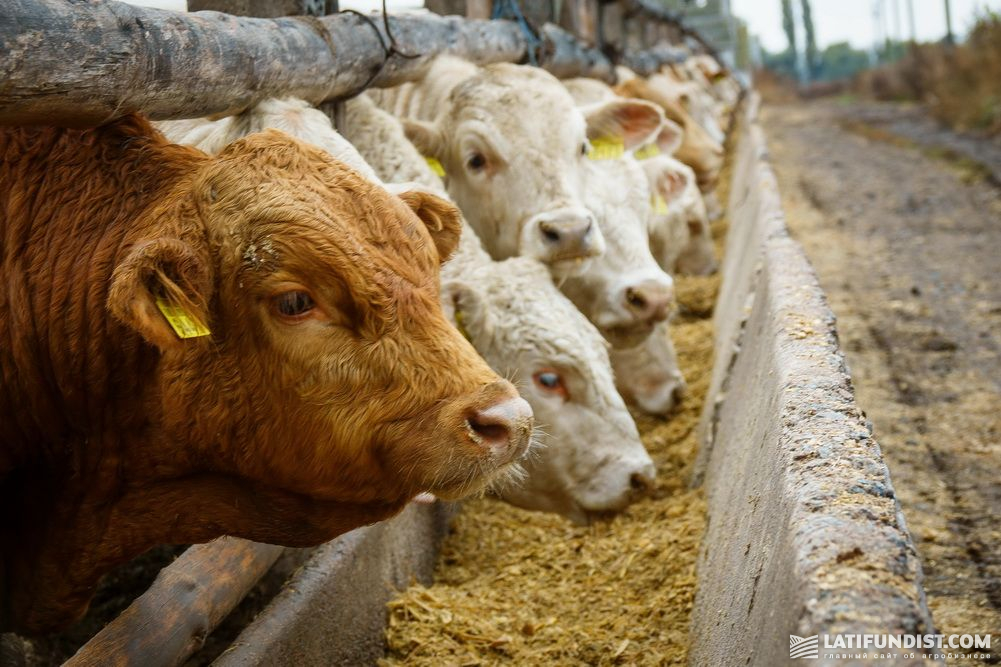
Where are we heading to?
As a cattle breeder, I keep it positive that this industry develops, especially the beef cattle sector. But for now, trends leave much to be desired. According to the Association of Milk Producers (AMP) and the State Statistics Service, last year Ukraine suffered a decrease in the number of cattle. I am pleased with export growth, but I am not happy that many dairy heifers are sold to Asian countries — Kazakhstan, Uzbekistan. Only a few domestic farms rebuild dairy farming. Perhaps this is the result of a low milk price, or it is the ineffective state support.
The delegation from Kazakhstan brought by the AMP to us wanted to buy meat stock and heifers. They told that they could get a loan at 14 per cent p.a., 10 per cent of which is repaid by the state. Unfortunately, we do not have such support. At least, there is a subsidy. But the Ukrainian market could make good use of such loans, of course.
I am an advocate of the land market liberalization because without it the economy will be very difficult to strengthen. But on the other hand, as a breeder, I understand perfectly well that the farmland market should not be open. If today the land market opens, almost all Ukrainian holdings will simply cut their livestock production, especially those unprofitable whose livestock is a social project. But we hope for the best.
Prices make none happy
The domestic beef market is depressing. If during the January holidays, the price for dairy breed bull meat was about UAH 48-50/kg, now it is UAH 38-39/kg tops. Meat bull in Ukraine is not particularly appreciated, to say the least. Recently I went to the supermarket and saw Ukrainian steaks (Koziatyn). I was surprised by the price of UAH 190/kg. By my calculations, the price should be least two times higher.
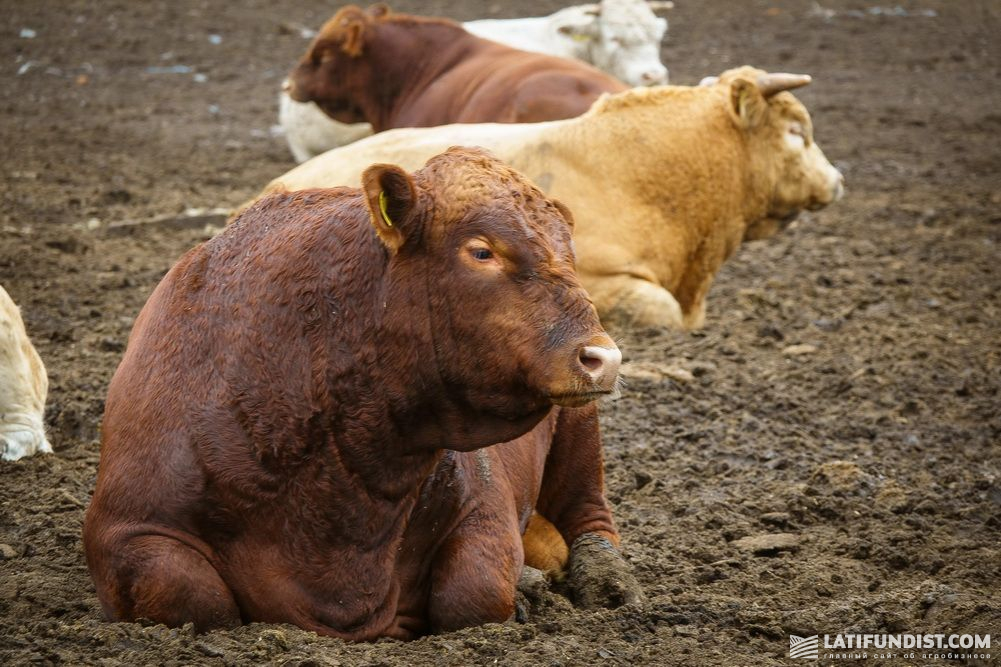
Today, the cost of meat bull in Agrain is about UAH 52-58/kg (bull or heifer). This bull must be transported to a meat processing plant, processed, put in a beautiful vacuum packaging and chilled. I tried imported steaks for UAH 1200-1300/kg. And the Ukrainian one is worth UAH190/kg. It is both awesome and alarming. No one knows of which breed is that meat. For example, in the USA, the steak price is strongly influenced by the breed (Holstein is cheaper, Angus and Hereford are more expensive).
On plans
Here is what I would like to share: we have developed a strategy to increase the livestock of Agricore Holding within 4-5 years to 10-11 thousand head/year, and later to 17 thousand head/year. There are facilities for this is — old working farms. Besides, we plan to scale up at some farms, add pens and so on. The fattening bases will be located in Chervony Partysany, Borzna and Serhiivka villages of Chernihiv region. There is another farm in Sosnytsky district. It was closed down in 2015. Now, this farm is in good condition, we do repairs there and deliver the animals. But, as I have said, this is still a plan for five years demanding rather big investments. That is why it is way too early to say that this will be 100 per cent fulfilled. Anyway, development cannot be overestimated.
Aleksandr Budnyk, chief livestock production technologist at Agricore Holding




